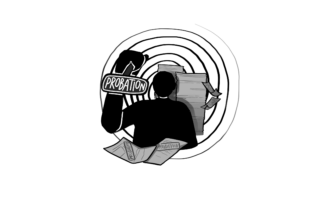As the year once again comes to a close, reflection on the educational strengths and weaknesses of Aragon High School and the SMUHSD is expected and encouraged. For PAR, the Peer Assistance and Review Committee, their task, among other developments which remain to be solidified, is to reevaluate and revise the current rubric which is used to evaluate district teachers.
Currently, the system used to evaluate teachers consists of a rubric based on the California Standards for the Teaching Profession, or CSTP, of which there are six: engaging all students, creating effective environments, understanding and organizing subject matter, planning instruction, assessing student learning, and developing as a professional educator. In respect to these standards, the SMUHSD contract mandates that all teachers must participate in the evaluation process and reflect upon the evaluation they receive.
While the current system of teacher evaluation consists of thorough criterion and is evidently created with the benefit of student learning as its central goal, it fails to include the very source of evaluation which should be central to achieving such a goal: student input.
The importance of student input and its potential contribution to achieving such goals as the CSTP articulates should not be disregarded, or, rather, completely absent in the process of teacher evaluation.
Essentially, the purpose of the teacher evaluation process is the improvement of said teachers. However, such evaluations currently function in a way that serves as a weak penalty system rather than opportunity for improvement. The current process is largely superficial; the teacher is notified in advance of the most important observations and given ample time to prepare. The resulting evaluation lacks a proper representation of the classroom atmosphere and may act as more of a formality than a legitimate judge of teacher performance.
The CSTP standards are designed to hold teachers accountable to their teaching with the aim of improving student learning. Ironically, the process lacks the proper input to adequately assess its criterion; without student input, it is difficult to fully evaluate the various elements that define a classroom such as teacher attitude and the general learning environment. As a result, the consequences of mediocre teaching falls upon students who cannot hold their teachers accountable.
As students are primarily affected by the failings of the teacher evaluation system, it is only logical that student input be taken into consideration. With both the credible observations of an experienced administrator or faculty member and the personal observations of students, evaluations would certainly become a more holistic analysis of teacher performance. Simply collecting student opinion in itself would make the process less of a formality and more democratic.
In the past, any official method of collecting and considering student feedback of teachers has been avoided due to concerns of subjectivity, efficiency, and fear of its disproportionate impact.
In order to fairly determine the quality of a teacher’s work, which is, of course, quite an abstract entity to judge, the PAR justly aims to remain as objective as possible. Obviously, including student feedback may compromise this objectivity as any free-form collection of student opinion would likely contain a great range of perspectives, including those that are biased or immature. Thus, if such material were directly factored into the rubric as is, it may unduly penalize or praise teachers.
For this reason, due caution of its disproportionate impact is understandable. Without a proper system for evaluating such subjective input, the district would be interpreting this information out of context and without relative discretion.
In addition, it can be presumed that a large reason for excluding student input in the past has been a combination of maintaining efficiency and not disrupting what is, admittedly, a generally effective and legitimate range of criterion.
However, the complications of including student input as a proper standard for judging such legitimate criterion can be resolved to address these concerns and ultimately benefit all interests involved.
While student feedback will undoubtedly present a worrisome range of potential subjectivity, the system of processing such input could easily be structured to both filter out extremities and utilize the majority opinion to better judge CSTP standards.
Instead of directly factoring student feedback into the current rubric to be seen by the district, the rubric could simply require that student input be forwarded to the local department heads for consideration. In this way, the local department heads—who surely hold the necessary discretion—could use the majority of opinion to give more accurate and direct feedback to individual teachers.
Consequently, filtering student feedback through department heads would provide all of the benefits of including student feedback while also eliminating the potential consequences.
While it is true that the system has been generally effective, the PAR revision to occur this year is the perfect opportunity to improve learning for both teachers and students. Ideally, student input should become a meaningful component of the official evaluation, but it must first be included in the process in order to illustrate and prove its benefits. Student evaluation of teachers should not be seen as a drastic change, but as an improvement to an already strong system.


